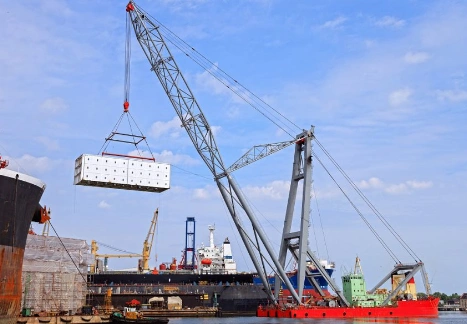For businesses engaged in global trade, the container return process is a critical step in ensuring customs clearance runs smoothly. Submitting the correct documentation not only helps with timely container handover, but also avoids unnecessary delays, fines or storage fees. Understanding the required documentation can save valuable time and resources while ensuring compliance with international shipping regulations.
What do I need to submit for pickup?
The Bill of Lading (B/L) stands as the cornerstone document in containerized shipping. This legally binding contract between the shipper and carrier serves three primary functions: a receipt for goods shipped, evidence of the contract of carriage, and a document of title. When returning containers, the B/L must accurately reflect all shipment details, including consignor and consignee information, cargo specifications, voyage particulars, and the unique bill of lading number. Discrepancies between the B/L and actual container contents can lead to significant complications, making thorough verification essential before submission.
Packing Lists provide the granular details that support the broader information contained in the bill of lading. These comprehensive manifests specify exactly what items are loaded within each container, including quantities, weights, dimensions, and packaging types. The inclusion of container numbers and shipping marks (those distinctive codes and symbols used to identify cargo) proves particularly important during the return process. Shipping lines and terminal operators rely on accurate packing lists to verify that containers are being returned in the proper condition - empty, clean, and without damage - as stipulated in most container leasing agreements.
Customs documentation forms another crucial component of the container return process. The Customs Declaration Form demonstrates that all imported goods have been properly cleared through customs and that applicable duties and taxes have been paid. This document typically includes the declarant's information, comprehensive cargo details (including harmonized system codes), transportation particulars, and customs approval stamps or signatures. Many ports require proof of customs clearance before accepting returned containers to ensure no undeclared or restricted items remain inside.
For certain commodity categories, a Commodity Inspection Certificate may be mandatory. Issued by authorized inspection agencies, these certificates validate that shipped goods meet quality standards, quantity specifications, and safety requirements of both exporting and importing countries. The certificate typically records inspection dates, testing methodologies, compliance findings, and the inspecting authority's credentials. While not all shipments require such certification, agricultural products, pharmaceuticals, and industrial equipment often fall under these requirements.

Beyond these core documents, port authorities and shipping lines may request additional paperwork depending on the shipment's nature. Equipment Interchange Reports document the container's physical condition at various transfer points, while Terminal Handling Receipts confirm successful container handovers. Some jurisdictions require Proof of Origin certificates for goods benefiting from preferential trade agreements. Dangerous goods shipments necessitate specialized Dangerous Cargo Declarations detailing proper handling procedures and emergency contacts.
The digital transformation of shipping documentation continues to gain momentum. Many ports now accept electronic versions of traditional paper documents through platforms like electronic bills of lading (eB/Ls) and digital customs clearance systems. However, paper backups often remain advisable when returning containers, as some terminals and inspectors still require physical copies. Shippers should verify specific documentation requirements with their local port authority and shipping line well in advance of container return deadlines.
Proper document preparation for container return involves more than just gathering paperwork - it requires careful coordination between multiple parties. Freight forwarders, customs brokers, trucking companies, and terminal operators all play roles in ensuring documents are complete, accurate, and submitted through proper channels. Establishing clear communication protocols with these partners can prevent last-minute scrambles to correct documentation errors that might otherwise delay container returns and incur detention charges.
As global trade regulations evolve, staying informed about changing documentation requirements becomes increasingly important. Recent years have seen heightened scrutiny of cargo security, stricter enforcement of customs valuation rules, and new requirements for advanced electronic submission of shipment data.
Proactive shippers who maintain organized records and understand current documentation standards position themselves to navigate the container return process efficiently while avoiding costly compliance missteps.
The consequences of inadequate documentation during container return can be severe. Beyond immediate financial penalties like detention and demurrage fees, repeated documentation issues may damage a company's reputation with shipping lines and port authorities. This can lead to reduced operational flexibility and higher costs in future shipments. Conversely, businesses that master the documentation process often benefit from smoother operations, stronger partner relationships, and ultimately, more reliable supply chains.
By treating container return documentation with the same care and attention as outbound shipping paperwork, companies can complete the full cycle of international shipments efficiently. This holistic approach to documentation management not only facilitates individual container returns but contributes to broader operational excellence in global trade.
Good is a company that provides services for customs clearance, pickup, and delivery in the United States. If you need any help, please contact us and we will reply to your email within 48 hours.

 Good
Good
 May 28 2025
May 28 2025


 Home
Home





 Email:
Email:
 Address: 216, Building A1, Fuhai Industrial Zone, Fuyong Community, Fuyong Street, Baoan District, Shenzhen, China
Address: 216, Building A1, Fuhai Industrial Zone, Fuyong Community, Fuyong Street, Baoan District, Shenzhen, China



